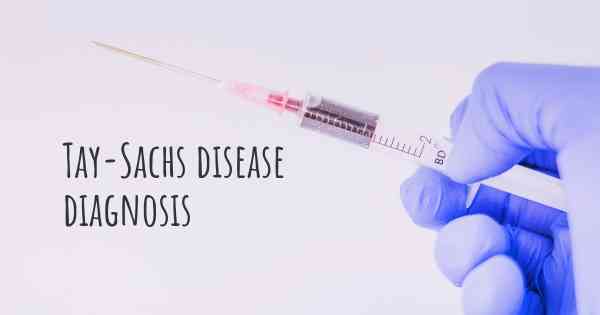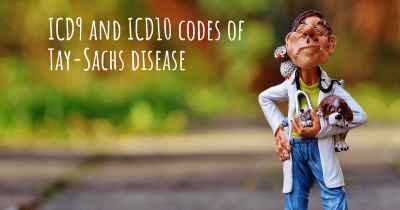How is Tay-Sachs disease diagnosed?
See how Tay-Sachs disease is diagnosed. Which specialists are essential to meet, what tests are needed and other useful information for the diagnosis of Tay-Sachs disease

Diagnosing Tay-Sachs Disease
Tay-Sachs disease is a rare genetic disorder that primarily affects the nervous system. It is caused by a deficiency of an enzyme called hexosaminidase A (Hex-A), which leads to the accumulation of a fatty substance called GM2 ganglioside in the nerve cells of the brain and spinal cord. This buildup progressively damages the cells, resulting in the characteristic symptoms of the disease.
Diagnosing Tay-Sachs disease involves a combination of clinical evaluation, genetic testing, and other diagnostic procedures. The process typically includes the following steps:
Clinical Evaluation:
During the initial assessment, a healthcare professional will review the patient's medical history and perform a physical examination. They will inquire about any symptoms or developmental delays observed in the individual, as well as any family history of Tay-Sachs disease or other genetic disorders. The doctor will also assess the patient's neurological function, looking for signs such as muscle weakness, loss of motor skills, and abnormal eye movements.
Genetic Testing:
Genetic testing is the most definitive method for diagnosing Tay-Sachs disease. It involves analyzing a sample of the patient's DNA to identify mutations in the HEXA gene, which is responsible for producing the Hex-A enzyme. There are different types of genetic tests available:
- Enzyme Analysis: This test measures the activity of Hex-A enzyme in the blood or other tissues. Individuals with Tay-Sachs disease have significantly reduced or absent Hex-A activity.
- DNA Testing: DNA testing can identify specific mutations in the HEXA gene. This can be done through various techniques, such as polymerase chain reaction (PCR), DNA sequencing, or gene chip analysis.
- Prenatal Testing: If there is a family history of Tay-Sachs disease or if both parents are carriers of the gene mutation, prenatal testing can be performed. This may involve chorionic villus sampling (CVS) or amniocentesis to obtain fetal cells for genetic analysis.
Other Diagnostic Procedures:
In addition to genetic testing, other diagnostic procedures may be used to support the diagnosis of Tay-Sachs disease:
- Eye Examination: An ophthalmologist may perform a detailed eye examination to look for a characteristic cherry-red spot on the macula, a region in the center of the retina. This finding is often present in individuals with Tay-Sachs disease.
- Electroencephalogram (EEG): An EEG measures the electrical activity of the brain. In Tay-Sachs disease, it may reveal abnormal brain wave patterns.
- Brain Imaging: Magnetic resonance imaging (MRI) or computed tomography (CT) scans can provide detailed images of the brain. These imaging techniques may show specific changes associated with Tay-Sachs disease, such as brain atrophy or abnormal white matter.
- Carrier Testing: Carrier testing can be performed to determine if an individual carries a Tay-Sachs gene mutation. This is particularly important for individuals of Ashkenazi Jewish descent, as they have a higher carrier frequency for Tay-Sachs disease.
Conclusion:
Tay-Sachs disease is diagnosed through a combination of clinical evaluation, genetic testing, and other diagnostic procedures. Genetic testing, including enzyme analysis and DNA testing, is the most definitive method for diagnosing the disease. Other diagnostic procedures, such as eye examinations, EEG, and brain imaging, may be used to support the diagnosis. Early diagnosis is crucial for appropriate management and genetic counseling.








